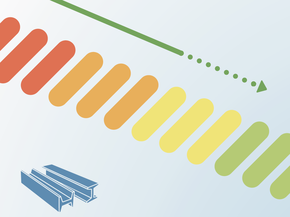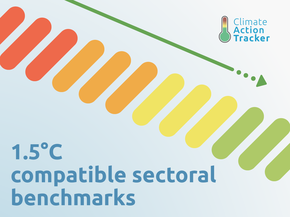Country summary
Overview
- Our assessment of Australia's latest Nationally Determined Contribution, announced October 2021, can be found here at our Climate Target Update Tracker
The Australian government has ramped up its “gas-fired recovery” over a green economic recovery, refused to increase its 2030 domestic emissions target, and is not on track to meet its current target. The CAT’s new overall rating for Australia is “Highly Insufficient”. The government appears intent on replacing fossil fuels with fossil fuels: the 2021-22 budget allocates large sums (AUD 52.9m) to gas infrastructure projects and a gas-fired power station (AUD 30m), with no new support for renewable energy nor electric vehicles.
The government will soon replace a coal power plant with a federal government-funded gas plant in New South Wales. This creates subsidised competition for renewables and batteries, and subsequent high uncertainty for renewable energy investors. Australia continues to support carbon capture and storage (CCS) and fossil fuel derived hydrogen, which prolongs the life of aging fossil fuel fleets in the energy system. The federal government has failed to set a concrete zero emissions target. On a positive note, effective climate policy is evident in most states and mainland territories.
The CAT rates Australia’s climate targets, policies and climate finance as “Highly insufficient”. The “Highly insufficient” rating indicates that Australia’s climate policies and commitments are not Paris Agreement Compatible. Australia’s 2030 domestic emissions reduction target is consistent with warming of 4°C if all other countries followed a similar level of ambition. Under Australia’s current policies, emissions will continue to rise and are consistent with more than 3°C warming. Australia needs to set a more ambitious target for emissions reductions, establish associated policies, and provide finance to support others to get a better rating.
GHG emissions in Australia have dipped due to a range of factors, but effective climate policy is not one of them. Australia’s policies and action emissions will not meet its 2030 climate target, despite the government’s claims its “high technology uptake scenario” will meet it. However, the high technology uptake scenario does not reflect current policy but is based on a number of non-policy-related assumptions such as higher energy efficiency rates and renewable uptake internationally compared to government baseline assumptions. The CAT rates Australia’s policies and action as “Insufficient”.
The Australian government has not initiated a green recovery, and the 2021-22 post COVID-19 budget supports a “gas-fired recovery” with AUD 52.9m for gas infrastructure projects and AUD 30m for a new gas-fired power station in Port Kembla, New South Wales (NSW). The budget provides no new support for renewable energy or electric vehicles, and the government is replacing fossil fuels with fossil fuels. The government has also committed AUD 600m to fund and operate -- through a government owned company -- another gas-fired power plant in Hunter Valley NSW, replacing a coal plant.
Ahead of the Biden Leaders’ Summit in April 2021, the government pledged AUD 565.8m towards “cleaner technology”. The funds will be directed towards “clean hydrogen” (produced from renewables or gas with carbon capture and storage, or CCS) and CCS hubs. State and federal governments are subsidising a New South Wales (NSW) gas/hydrogen project with a combined AUD 83m.
The Government’s Low Emissions Technology Statement, released in September 2020, aims to invest AUD $18bn in the next decade in five priority areas, without a zero emissions target. The Statement lacks a climate plan and props up fossil fuel industries such as hydrogen produced by gas and CCS. It does not rule out coal, nor does it prioritise electric vehicles.
In another regressive step, the government attempted to change the remit of the Australian Renewable Energy Agency (ARENA), a government organisation that facilitates research and the flow of finance into the renewables sector, to include CCS. The move to change ARENA’s mandate was rejected by the Senate. Despite huge government funding for CCS, there is only one CCS project operational in Australia: the Gorgon project, which has fallen well short of the capture rate contractually agreed and has experienced issues and delays since start-up.
The government is considering paying coal generators to stay operational despite the need for an immediate coal phase-out. A government-funded programme is offering grants to build the capacity of diesel reserves. The Future Fuels Strategy discussion paper demonstrates the government has no intention of introducing any legislation to support a switch to electric vehicles, neither through subsidies nor a phase out date for fossil fuel new car sales.
The federal Climate Solutions Fund and the Safeguard Mechanism provide no incentives for large industrial emitters to reduce emissions; it even allows for increasing baseline emissions. Australia’s emissions per capita ranks seventh highest in the world.
While the federal government continues to rely on ineffective policies, state level action shows some climate leadership. At state level, there is a higher level of ambition to reduce emissions and the implementation of renewable energy targets.
See the policies and action section for more details.
Australia recommunicated its domestic target in December 2020 without raising its 2030 target. Prime Minister Scott Morrison showed no climate ambition at the Biden Leader’s Summit in April 2021, instead giving vague messaging on having a preference to reach net zero emissions by mid-century.
Meanwhile, public concern about climate change has risen, amid increasing impacts such as the catastrophic bushfires that devastated several states in late 2019 and early 2020, and severe flooding in March 2021 across eastern Australia. The failure to increase its 2030 climate action contravenes the Paris Agreement’s requirement that each successive nationally determined contribution (NDC) should present a progression in mitigation ambition. The CAT rates the NDC as “Insufficient” as it would lead to over 2°C and up to 3°C of warming when compared to modelled domestic emissions pathways.
The CAT’s assessment of Australia’s total fair share contribution takes into account its emissions reduction target and its climate finance.
The CAT rates Australia’s fair share target “Highly insufficient”. The “Highly insufficient” rating indicates that Australia’s climate commitment in 2030 is not at all consistent with the Paris Agreement’s 1.5°C temperature limit. Australia’s target is not in line with any interpretation of a fair approach to meeting the Paris Agreement’s 1.5°C limit. If all countries were to follow Australia’s approach, warming could reach over 3°C and up to 4°C. Given that its domestic target is not Paris compatible, improvements in Australia’s fair share contribution would need to come in the form of both strengthened domestic emissions reductions and additional emissions reductions achieved in developing countries through finance.
The “Critically insufficient” rating indicates that Australia’s climate finance contributions have been low and are not in line with any interpretation of a fair approach to meeting the Paris Agreement’s 1.5°C limit. To receive a better rating, Australia needs to stop funding fossil fuel overseas and increase the level of its international climate finance.
Australia’s climate finance is not sufficient to improve the fair share target rating, and the CAT rates Australia’s overall fair share contribution as “Insufficient”.
Australia is flagged under this rating because its maximum land use, land use change and forestry (LULUCF) net emissions in the last 30 years are greater than 30% of total emissions. Since 1990, its deforestation emissions have decreased, but this previous peak indicates the high potential for deforestation emissions if policies are reversed and impacts its targets and accounting.
Australia is the world’s only developed country that is classified as a deforestation hotspot. Despite this, the government intends to meet its NDC by relying on LULUCF as a carbon sink. Government projections (from 2020) indicate LULUCF accounts for -3% of emissions in 2020 and -1% in 2030. Government data regularly recalculates LULUCF for historical and projected emissions. The recalculations highlight the uncertainty of this sector: data changes have significant repercussions on Australia’s progress in meeting emissions targets. Effective climate policy, particularly in the emissions-intensive energy and industry sectors, would reduce the need to rely on uncertain LULUCF carbon sinks.
Australia does not have a net-zero target. The Biden Leaders’ Summit in April 2021 illustrated how Australia lags far behind other countries on climate ambition. The Prime Minister mentioned Australia will reach net zero emissions by mid-century but failed to make a concrete commitment, despite states and territories committing to net zero by 2050 or earlier. It is still possible for Australia to get emissions onto a pathway to limit global warming to 1.5℃ this century, but urgent action is required. To be 1.5℃ compatible, Australia would need to reverse the current policy direction. A 1.5 ˚C pathway was developed in the CAT’s “Scaling up Climate Action Australia” report.
Further analysis
Latest publications
Stay informed
Subscribe to our newsletter





